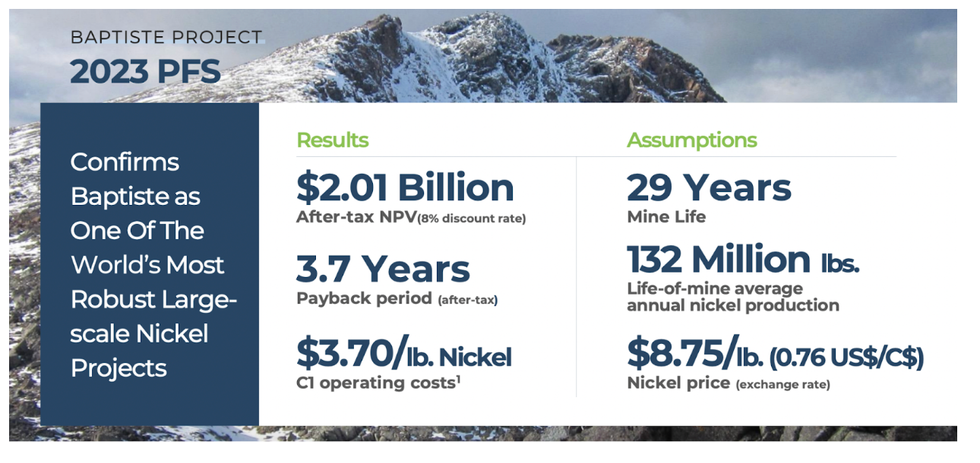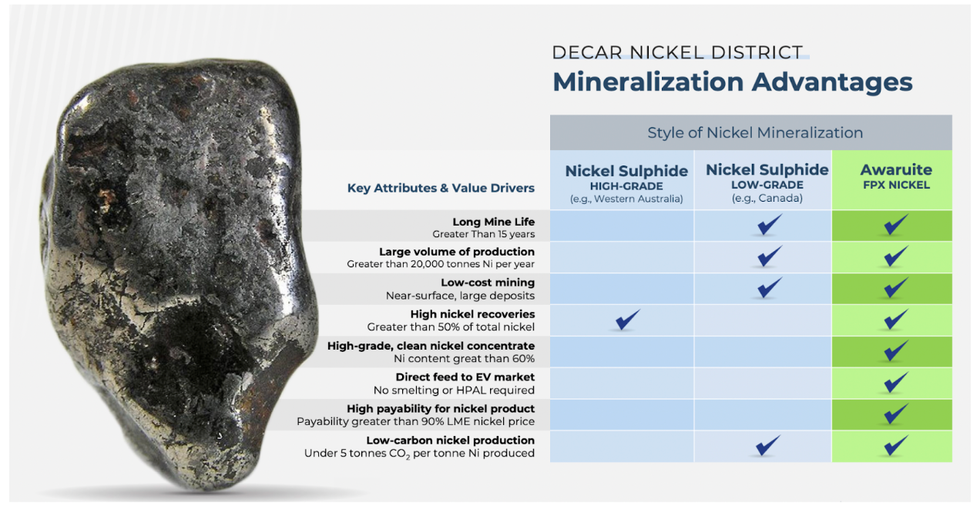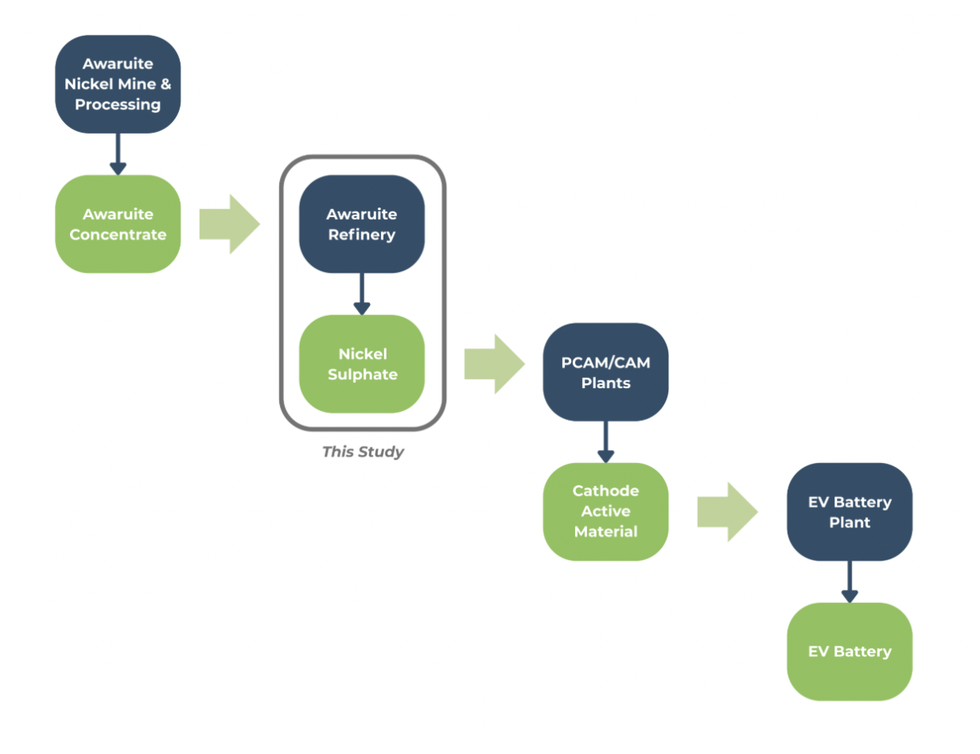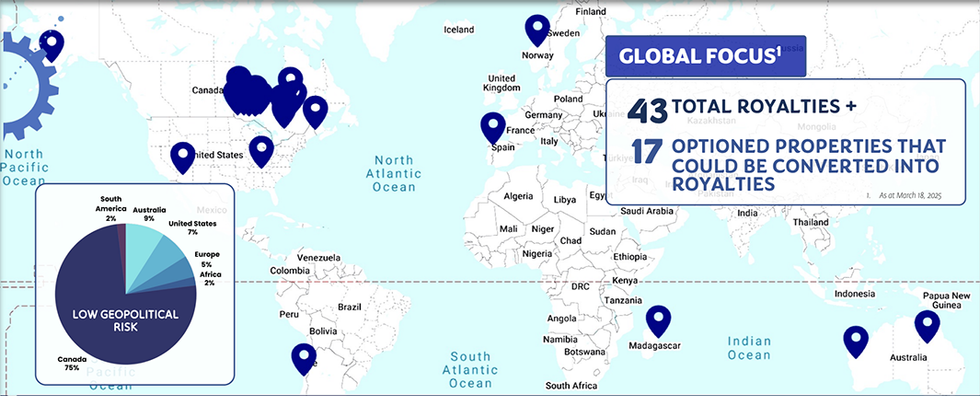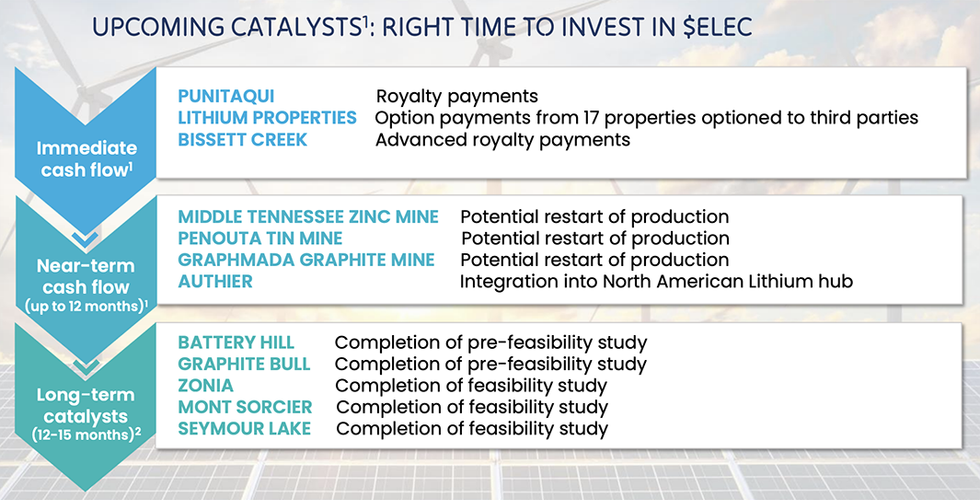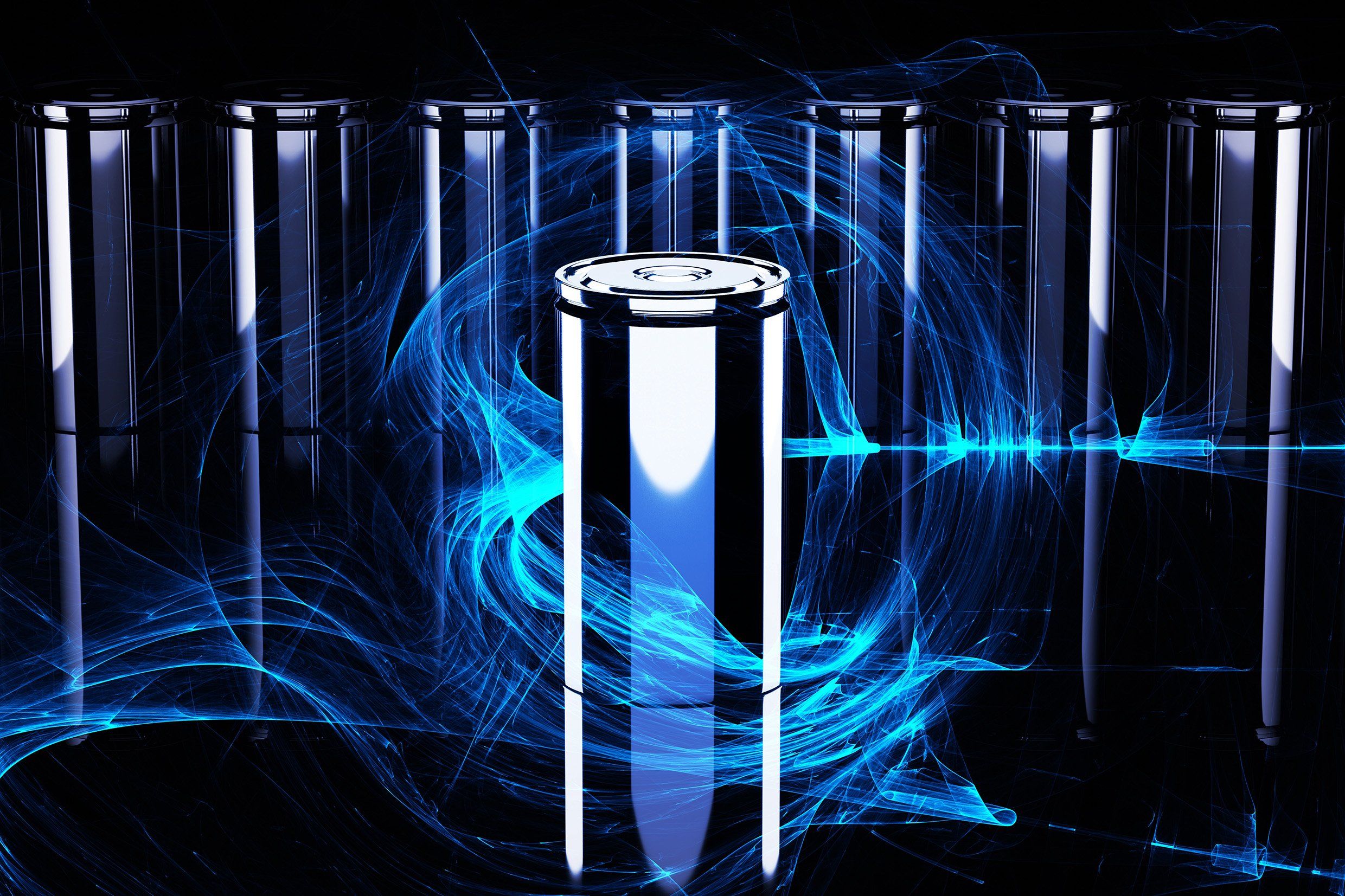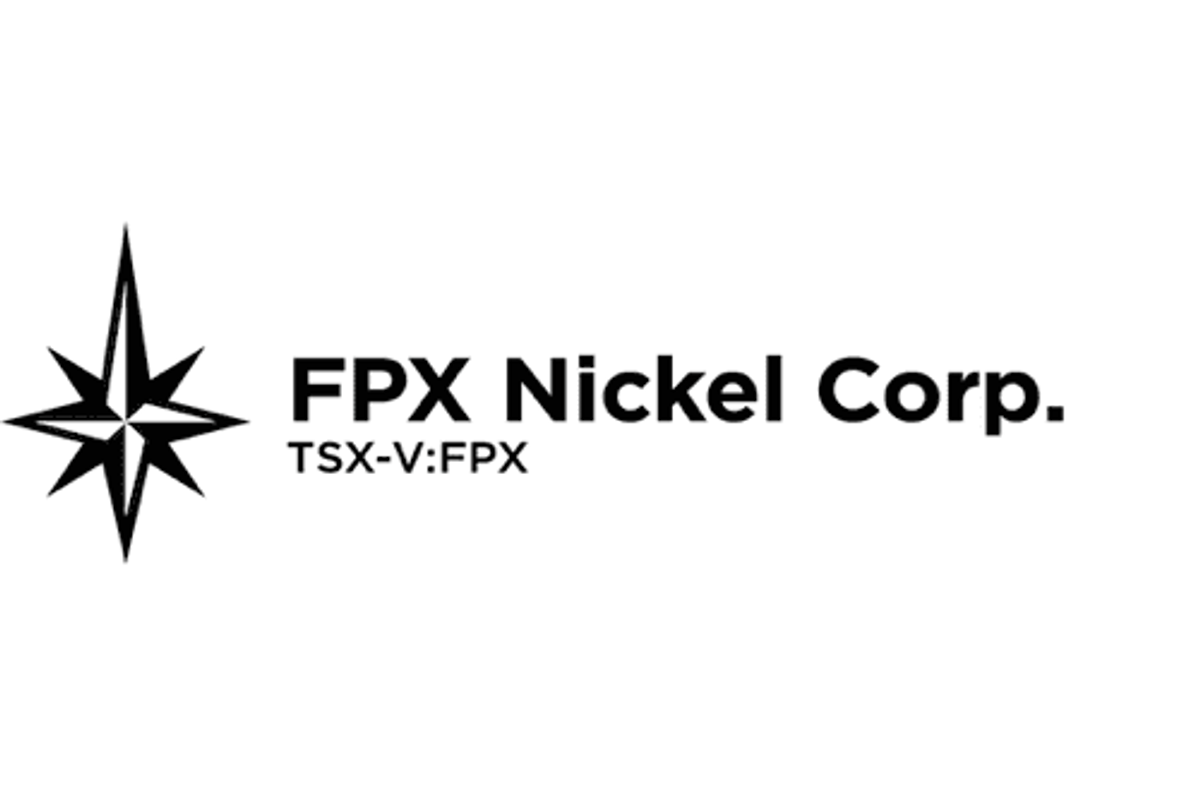
FPX Nickel Corp. (TSXV: FPX) (OTCQB: FPOCF) (" FPX " or the " Company ") is pleased to announce additional drill results confirming the lateral extension of the significant new nickel discovery at the Van Target (" Van ") in the Company's Decar Nickel District (" Decar " or the " District ") in central British Columbia. The results from holes 21VAN-003 and 21VAN-004 complement the first two discovery holes reported by the Company on October 19 th with the first four Van holes now defining a zone of strong awaruite nickel mineralization measuring approximately 350 metres wide by 400 to 550 metres long, to downhole depths of 350 metres. Assays from the remaining five holes from this year's maiden drill program are expected to be reported in the coming weeks.
Highlights
- Second set of Van holes (21VAN-003 and 21VAN-004) extend mineralization by approximately 350 m east-northeast from the first two holes (21VAN-001 and 21VAN-002), with all four holes drilled to-date returning strong nickel mineralization over broad intervals
- Hole 21VAN-003 intersected 143 m grading 0.143% DTR nickel (0.196% total nickel), starting at an approximate vertical depth of 48 m below surface, which is one of the 10 highest-grading, near-surface intervals in the history of Decar (see Table 1 regarding vertical depth)
- Nickel mineralization at Van occurs as disseminated awaruite (nickel-iron alloy) and in the same ophiolite host rocks as at Baptiste
- The result of 21VAN-003 compares favourably with previous drilling results at Baptiste, which contains 1.996 billion tonnes of indicated resources at an average grade of 0.122% DTR nickel , and 593 million tonnes of inferred resources with an average grade of 0.114% DTR nickel , both reported at a cut-off grade of 0.06% DTR nickel. Mineral resources are not mineral reserves and do not have demonstrated economic viability. See the resource estimate set out in FPX's NI 43-101 Technical Report – "Preliminary Economic Assessment – Baptiste Nickel Project, British Columbia, Canada ," with an effective date of September 9, 2020 , filed under the Company's SEDAR profile on March 17, 2021
"We are very pleased with this second batch of drill results from the maiden drilling program at Van, which are consistent with the positive results from the discovery holes 21VAN-001 and 21VAN-002, materially expanding the nickel mineralization at Van," commented Martin Turenne , the Company's President and CEO. "While the Van Target is defined by the sporadic presence of mineralized outcrop over a 2.5 km 2 area, 21VAN-003 and 21VAN-004 were both drilled in areas with extensive overburden cover; the positive results of these holes support the view that strong nickel mineralization can occur in areas that extend beyond mineralized outcrop, thus expanding the scale of the conceptual target at Van. We look forward to reporting additional assays from this year's maiden nine-hole Van program in the coming weeks."
Link to view drill results within interactive 3D VRIFY model (for best results, view in full screen): https://vrify.com/embed/decks/FPX-Nickel-Van-Target-Press-Release-Nov-15
Van Target Drilling
The results of 21VAN-003 and 21VAN-004 are from a maiden nine-hole, 2,688 m drill program at the Van Target, which is located 6 km north of Baptiste at a similar elevation, and accessible via active logging roads (see Figure 1). Maiden drilling at Van tested the sub-surface potential for mineralization below and adjacent to prospective mineralized outcroppings, which had defined a target area of approximately 2.5 km 2 . The size of the Van Target as defined by this outcrop sampling is comparable to the Baptiste deposit, which measures 3 km along strike with widths of up to 1 km. All nine holes at Van were drilled to the north-northeast at an inclination of minus 50 degrees to a target depth of 350 m .
Table 1 – Van Target Drill Hole Results
| Hole | Intersections 1 | DTR Nickel (%) 2 | Total Nickel (%) 2 | Notes | ||
| From | To | Length | ||||
| 21VAN-003 | 64 | 351 | 287 | 0.119 | 0.210 | |
| including | 68 | 211 | 143 | 0.143 | 0.196 | |
| and | 211 | 351 | 140 | 0.096 | 0.225 | |
| | | |||||
| 21VAN-004 | 93 | 363 | 270 | 0.082 | 0.197 | Excludes 13.2 m dike from |
| including | 93 | 157 | 64 | 0.067 | 0.208 | |
| and | 157 | 332 | 175 | 0.095 | 0.198 | |
1 The vertical depth (true width) of all quoted intersections in this news release is interpreted to be approximately 75% of downhole depth.
2 All mineralized core samples are assayed for "total nickel" and "Davis Tube Recoverable (" DTR ") nickel." "DTR nickel" analyses measure only the magnetically recoverable nickel hosted in awaruite (nickel-iron alloy), whereas the "total nickel" analyses measure both recoverable and refractory nickel, the latter hosted in silicate phases like olivine and, to a lesser extent, serpentine. The Davis Tube method is in effect a mini-scale metallurgical test procedure used to provide a more accurate measure of recoverable nickel and is the global industry-standard geometallurgical test for magnetic recovery operations and exploration projects. See "Sampling and Analytical Method", below.
The nickel mineralization intersected within 21VAN-003 and 21VAN-004 is characterized by disseminated, coarse-grained awaruite (nickel-iron alloy) mineralization hosted in serpentinized ophiolitic rocks and is very analogous to the mineralization and geological setting at the Baptiste Deposit.
21VAN-003 was collared 350 m southeast from 21VAN-001 and was drilled to the north-northeast at an angle of minus 50 degrees. The hole encountered bedrock at 64 m downhole (approximately 48 m vertical depth) and thereafter intersected 287 m of strong awaruite mineralization, to a downhole depth of 351 m . The strongest mineralization at 21VAN-003 was encountered near the top of hole, including a 143 m interval of 0.143% DTR nickel starting at downhole depth of 68 m (approximately 51 m vertical depth). Nickel mineralization in this hole remains open at depth.
21VAN-004 was collared 210 m north-northeast along section from 21VAN-003 and was also drilled to the north-northeast at minus 50 degrees. The hole encountered bedrock at 93 m downhole (approximately 70 m vertical depth) and thereafter intersected 270 m of awaruite mineralization, grading 0.082% DTR nickel to a downhole depth of 363 m (excluding an unmineralized 13.2 m dike from 337.7 to 350.9 m ). The strongest mineralization encountered at 21VAN-004 was over a 175 m interval of 0.095% DTR nickel starting at downhole depth of 157 m . This hole ended in diking and altered peridotite.
Collar locations for the nine holes drilled at the Van Target are provided in Figure 2. Holes were spaced on section lines approximately 350 m apart and tested the Van Target over an area of approximately 1 km 2 to a maximum downhole depth of 350 m . Assay results from holes 21VAN-001 and 21VAN-002 were reported in the Company's October 19, 2021 news release. Assays are pending for holes 21VAN-005 to 21VAN-009.
Sampling and Analytical Method
For a description of the Company's sampling and analytical method, including a description of QA/QC procedures, see the news release dated October 19, 2021 .
Dr. Peter Bradshaw , P. Eng., FPX Nickel's Qualified Person under NI 43-101, has reviewed and approved the technical content of this news release.
About the Decar Nickel District
The Company's Decar Nickel District claims cover 245 km 2 of the Mount Sidney Williams ultramafic/ophiolite complex, 90 km northwest of Fort St. James in central British Columbia . The District is a two-hour drive from Fort St. James on a high-speed logging road.
Decar hosts a greenfield discovery of nickel mineralization in the form of a naturally occurring nickel-iron alloy called awaruite (Ni 3 Fe), which is amenable to bulk-tonnage, open-pit mining. Awaruite mineralization has been identified in four target areas within this ophiolite complex, being the Baptiste Deposit, and the B, Sid and Van targets, as confirmed by drilling in the first three plus petrographic examination, electron probe analyses and outcrop sampling on all four. Since 2010, approximately US $24 million has been spent on the exploration and development of Decar.
Of the four targets in the Decar Nickel District, the Baptiste Deposit, which was initially the most accessible and had the biggest known surface footprint, has been the focus of diamond drilling since 2010, with a total of 82 holes and over 31,000 m of drilling completed. The Sid target was tested with two holes in 2010 and the B target had a single hole drilled in 2011; all three holes intersected nickel-iron alloy mineralization over wide intervals with DTR nickel grades comparable to the Baptiste Deposit. The Van target was not drill-tested at that time as bedrock exposures in the area were very poor prior to more recent logging activity. In 2021, the Company executed a maiden drilling program at Van, initial results of which are reported here and in the Company's October 19, 2021 news release, which has returned promising results comparable with the strongest results at Baptiste.
About FPX Nickel Corp.
FPX Nickel Corp. is focused on the exploration and development of the Decar Nickel District, located in central British Columbia , and other occurrences of the same unique style of naturally occurring nickel-iron alloy mineralization known as awaruite. For more information, please view the Company's website at www.fpxnickel.com or contact Martin Turenne , President and CEO, at (604) 681-8600 or ceo@fpxnickel.com .
On behalf of FPX Nickel Corp.
"Martin Turenne"
Martin Turenne , President, CEO and Director
Forward-Looking Statements
Certain of the statements made and information contained herein is considered "forward-looking information" within the meaning of applicable Canadian securities laws. These statements address future events and conditions and so involve inherent risks and uncertainties, as disclosed in the Company's periodic filings with Canadian securities regulators. Actual results could differ from those currently projected. The Company does not assume the obligation to update any forward-looking statement.
Neither the TSX Venture Exchange nor its Regulation Services Provider accepts responsibility for the adequacy or accuracy of this release.
SOURCE FPX Nickel Corp.

![]() View original content to download multimedia: https://www.newswire.ca/en/releases/archive/November2021/15/c8684.html
View original content to download multimedia: https://www.newswire.ca/en/releases/archive/November2021/15/c8684.html





